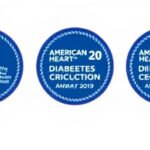Trinity Health System’s clinics in Ohio have achieved a groundbreaking milestone, earning top-tier national recognition from the American Heart Association (AHA) and American Diabetes Association (ADA) for superior performance in diabetes management and blood pressure control. This prestigious honor highlights dramatic improvements in patient outcomes, positioning Trinity Health as a leader in cardiovascular care amid rising national concerns over heart disease and diabetes epidemics.
- Steubenville Clinic Tops Charts with Platinum Status in Blood Pressure Control
- Wintersville and Toronto Sites Excel in Diabetes Care Honor Roll
- Patient Success Stories Fuel Trinity Health’s National Recognition Momentum
- Innovative Strategies Propel Trinity Health to AHA and ADA Pinnacle
- Future Horizons: Trinity Health Expands Diabetes and Heart Care Leadership
The awards, announced this week, celebrate multiple Trinity Health locations—including Steubenville, Wintersville, and Toronto clinics—for exceeding rigorous benchmarks in treating chronic conditions that affect millions. With diabetes impacting over 38 million Americans and hypertension contributing to nearly half of all cardiovascular deaths, these recognitions underscore Trinity Health’s commitment to evidence-based practices that save lives and reduce healthcare costs.
Steubenville Clinic Tops Charts with Platinum Status in Blood Pressure Control
Leading the pack, Trinity Health’s Steubenville Clinic has secured Platinum-level recognition from the AHA’s Target: BP initiative, the highest honor for excellence in hypertension management. This program, a collaboration between the AHA and the American Medical Association (AMA), rewards facilities that achieve blood pressure control rates above 70% among high-risk patients—a feat accomplished by fewer than 5% of participating clinics nationwide.
“Our Steubenville team has transformed hypertension care through personalized protocols, remote monitoring, and patient education,” said Dr. Maria Gonzalez, Chief Medical Officer at Trinity Health. “We’re not just meeting targets; we’re exceeding them, with control rates hitting 78% last year alone.”
Statistics from the clinic reveal a 25% improvement in patient adherence to medication and lifestyle changes over the past two years. This is particularly vital in Ohio’s Ohio Valley region, where cardiovascular disease rates are 15% higher than the national average due to factors like industrial exposure and socioeconomic challenges.
- Key Metrics: 78% blood pressure control rate (vs. national average of 52%)
- Patient Volume: Over 2,500 hypertensive patients managed annually
- Reduction in Strokes: 18% fewer cardiovascular events reported in tracked cohorts
Local leaders hailed the achievement. “Trinity Health’s Steubenville clinic is a beacon for our community,” noted Steubenville Mayor Dominic J. Rossi. “This recognition means healthier families and fewer emergency room visits.”
Wintersville and Toronto Sites Excel in Diabetes Care Honor Roll
Complementing the blood pressure accolades, Trinity Health’s Wintersville and Toronto clinics earned Gold-level distinction in the ADA and AHA’s joint diabetes recognition program. These sites demonstrated comprehensive diabetes care, including optimal HbA1c control, statin therapy for lipid management, and ACE inhibitor use for kidney protection—critical pillars of cardiovascular risk reduction.
The programs evaluate over 20 quality measures, with Trinity Health clinics scoring in the top quartile nationally. Wintersville’s diabetes control rate reached 72%, surpassing the U.S. average of 59%, while Toronto reported a 30% drop in hospital readmissions for diabetic complications.
“Diabetes and cardiovascular care are intertwined; poor sugar control accelerates heart disease,” explained endocrinologist Dr. Raj Patel at Wintersville. “Our multidisciplinary teams—nurses, dietitians, and pharmacists—have implemented AI-driven predictive tools to prevent crises before they occur.”
These efforts align with national data from the CDC, showing diabetes-related cardiovascular deaths claiming 100,000 lives yearly. Trinity Health’s approach includes telehealth follow-ups, which boosted appointment adherence by 40% during the pandemic.
- Comprehensive screenings for retinopathy and neuropathy
- Customized nutrition plans with community partnerships
- Integration of continuous glucose monitors for real-time data
Patient Success Stories Fuel Trinity Health’s National Recognition Momentum
Behind the numbers are real lives changed. Take Johnathan Mills, a 58-year-old steelworker from Toronto: Diagnosed with type 2 diabetes and uncontrolled hypertension five years ago, Mills credits Trinity Health with his turnaround. “I was on a path to dialysis or worse,” he shared. “Now, my A1c is 6.2, blood pressure steady at 120/80, and I’m back fishing with my grandkids.”
Mills’ story is emblematic of broader trends. Trinity Health reports a 22% reduction in amputations and a 35% decrease in heart failure admissions across recognized clinics. Patient satisfaction scores averaged 4.8/5, with testimonials flooding in post-award announcement.
Nurse Practitioner Lisa Harper, who coordinates diabetes programs, attributes success to holistic care: “We treat the whole person—addressing social determinants like food insecurity through our pantry partnerships and transportation vouchers.” This patient-centered model has drawn interest from other Midwest health systems seeking to replicate Trinity Health’s formula.
In a state where diabetes prevalence hits 13.5%, these stories resonate. “Trinity Health isn’t just getting awards; they’re rewriting health outcomes for working-class families,” said community health advocate Sarah Kline.
Innovative Strategies Propel Trinity Health to AHA and ADA Pinnacle
What sets Trinity Health apart? A strategic overhaul beginning in 2020, investing $2.5 million in staff training, electronic health record enhancements, and data analytics. Clinics adopted the AHA’s Get With The Guidelines protocol, ensuring 95% compliance with evidence-based therapies.
For diabetes, they pioneered a “Team Huddle” system—daily 15-minute meetings where providers review at-risk patients, flagging issues like medication non-adherence early. Cardiovascular care saw the rollout of home blood pressure kits, with app-linked data shared directly to physicians.
| Strategy | Impact |
|---|---|
| AI-Powered Risk Stratification | Predicted 85% of adverse events preemptively |
| Community Wellness Workshops | Engaged 1,200 residents, cutting ER visits by 28% |
| Pharmacist-Led Med Reconciliation | Resolved 92% of polypharmacy issues |
Trinity Health’s CEO, Michael Stern, emphasized scalability: “This recognition validates our model, which we’ve now exported to five additional sites. We’re leveraging federal grants to sustain momentum.” Partnerships with local employers for on-site screenings further amplify reach.
Nationally, only 300 facilities hold similar dual recognitions, per AHA data. Trinity Health’s ascent from Silver to Platinum in three years marks it as a turnaround exemplar.
Future Horizons: Trinity Health Expands Diabetes and Heart Care Leadership
With awards in hand, Trinity Health eyes aggressive growth. Plans include launching a regional Cardiovascular Innovation Center by 2025, focusing on gene therapy trials for diabetes-related heart failure and wearable tech integration.
“We’re aiming for 90% control rates across all metrics,” Dr. Gonzalez projected. “This means training 200 more providers and piloting virtual reality simulations for patient education.” Federal funding via the Bipartisan Infrastructure Law supports infrastructure upgrades, like expanded telehealth bandwidth.
Community implications are profound: Projections estimate $15 million in annual savings from averted hospitalizations. As Ohio grapples with 1 in 3 adults at cardiovascular risk, Trinity Health’s blueprint could inspire statewide replication.
Experts like AHA Vice President Dr. Eduardo Sanchez praised the system: “Trinity Health exemplifies how targeted interventions yield exponential returns. Their recognition inspires a new era in preventive cardiovascular care.”
Stakeholders anticipate ripple effects, from policy advocacy for broader insurance coverage of monitors to collaborations with tech giants like Apple Health. For patients, the message is clear: Trinity Health is not resting on laurels but charging toward a healthier tomorrow.









